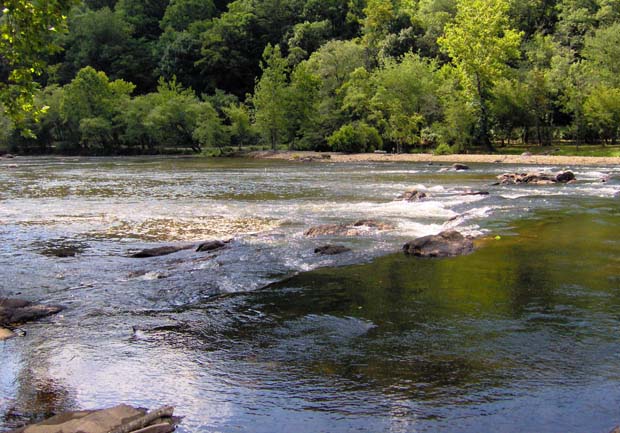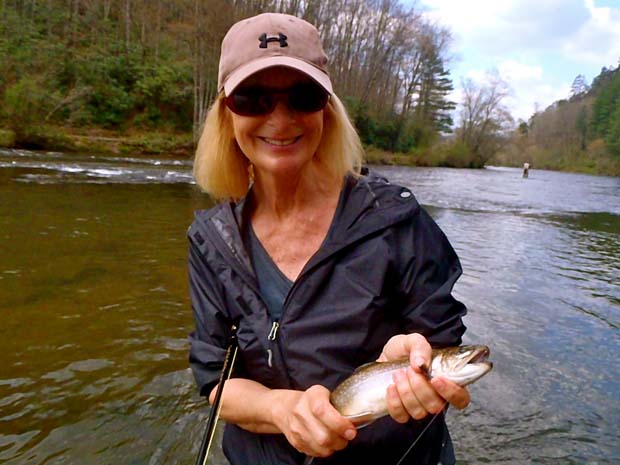I’ve had the pleasure of fishing the Tuckasegee and other western North Carolina gems many times while a student at the University of North Carolina at Chapel Hill.
The Tuckasegee runs entirely within the borders of western North Carolina and runs the length of Jackson County and is formed by the junction of Panthertown and Greenland creeks in southeastern Jackson, flowing northwest into Swain County where it enters the Little Tennessee River.
The headwaters in Panthertown Valley contain wild brook trout. This part of the river is catch-and-release waters, artificial lures only. Below Cedar Cliff Lake in central Jackson County, the Tuckasegee is joined by the West Fork. This part of the river is hatchery-supported waters, but it often yields a good number of wild brown and rainbow trout. The section of the river at East Laport, a popular picnic and recreation area on NC 107 above Western Carolina University, produced a 15-pound brown trout that stayed on the record books for several years.
Below Dillsboro Dam and continuing to Bryson City in Swain County, the fishery changes to a mix of brown and rainbow trout and smallmouth bass, a section that some area bass fishermen call “premier smallmouth territory.” The lower section also has a good population of bream, and from Ela to Bryson City, walleye often populate the stream, especially during the spawning season.
Sylva, North Carolina – September, 2013
[dropcap]T[/dropcap]he delayed harvest section of the Tuckasegee River, a main stop on the Western North Carolina Fly Fishing Trail, will be stocked with 19,600 trout this fall.
The stocking will be conducted by the North Carolina Wildlife Resources Commission in two segments – 9,800 trout the first week of October, and 9,800 trout the first week of November.
Brook and rainbow trout account for 80 percent of the fish placed in the river, with brown trout making up the remaining 20 percent.
Anglers are allowed to fish the delayed harvest section of the Tuckasegee River year round. However, any fish caught between Oct. 1 and the first Saturday in June must be released immediately. The delayed harvest section of the Tuck runs from the N.C. Hwy 107 bridge in the Lovesfield community to Dillsboro.
“Your catch percentage goes up greatly when the delayed harvest waters of the Tuck are stocked in October and November,” said Alex Bell, a fly fishing guide in Sylva. “This provides a great chance to accomplish the ‘Tuckasegee Slam’ which is catching a brook, rainbow and brown all on the same day.”
Other good autumn places to fish along the WNC Fly Fishing Trail are: Scott Creek, Panthertown Creek, Savannah Creek and the Chattooga River.
Scott Creek, which flows through Sylva and Dillsboro, received a total of 3,000 brook, rainbow and brown trout in July and August.
[information]For info on the Fly Fishing Trail, call (800) 962-1911 or Fly Fishing Trail by clicking here […]
[/information]



